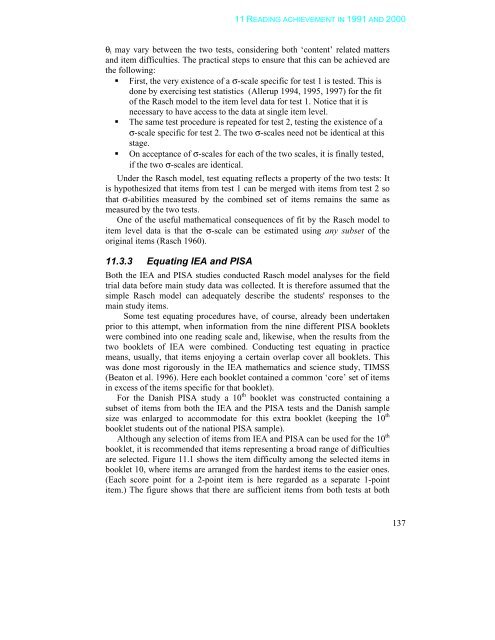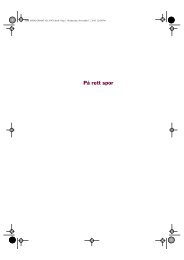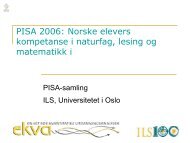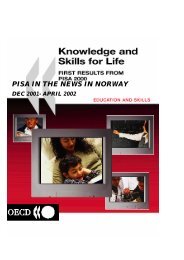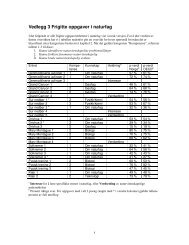11READING ACHIEVEMENT IN 1991 AND 2000 - Pisa
11READING ACHIEVEMENT IN 1991 AND 2000 - Pisa
11READING ACHIEVEMENT IN 1991 AND 2000 - Pisa
- No tags were found...
You also want an ePaper? Increase the reach of your titles
YUMPU automatically turns print PDFs into web optimized ePapers that Google loves.
11 READ<strong>IN</strong>G <strong>ACHIEVEMENT</strong> <strong>IN</strong> <strong>1991</strong> <strong>AND</strong> <strong>2000</strong>θ i may vary between the two tests, considering both ‘content’ related mattersand item difficulties. The practical steps to ensure that this can be achieved arethe following: First, the very existence of a σ-scale specific for test 1 is tested. This isdone by exercising test statistics (Allerup 1994, 1995, 1997) for the fitof the Rasch model to the item level data for test 1. Notice that it isnecessary to have access to the data at single item level. The same test procedure is repeated for test 2, testing the existence of aσ-scale specific for test 2. The two σ-scales need not be identical at thisstage. On acceptance of σ-scales for each of the two scales, it is finally tested,if the two σ-scales are identical.Under the Rasch model, test equating reflects a property of the two tests: Itis hypothesized that items from test 1 can be merged with items from test 2 sothat σ-abilities measured by the combined set of items remains the same asmeasured by the two tests.One of the useful mathematical consequences of fit by the Rasch model toitem level data is that the σ-scale can be estimated using any subset of theoriginal items (Rasch 1960).11.3.3 Equating IEA and PISABoth the IEA and PISA studies conducted Rasch model analyses for the fieldtrial data before main study data was collected. It is therefore assumed that thesimple Rasch model can adequately describe the students' responses to themain study items.Some test equating procedures have, of course, already been undertakenprior to this attempt, when information from the nine different PISA bookletswere combined into one reading scale and, likewise, when the results from thetwo booklets of IEA were combined. Conducting test equating in practicemeans, usually, that items enjoying a certain overlap cover all booklets. Thiswas done most rigorously in the IEA mathematics and science study, TIMSS(Beaton et al. 1996). Here each booklet contained a common ‘core’ set of itemsin excess of the items specific for that booklet).For the Danish PISA study a 10 th booklet was constructed containing asubset of items from both the IEA and the PISA tests and the Danish samplesize was enlarged to accommodate for this extra booklet (keeping the 10 thbooklet students out of the national PISA sample).Although any selection of items from IEA and PISA can be used for the 10 thbooklet, it is recommended that items representing a broad range of difficultiesare selected. Figure 11.1 shows the item difficulty among the selected items inbooklet 10, where items are arranged from the hardest items to the easier ones.(Each score point for a 2-point item is here regarded as a separate 1-pointitem.) The figure shows that there are sufficient items from both tests at both137


